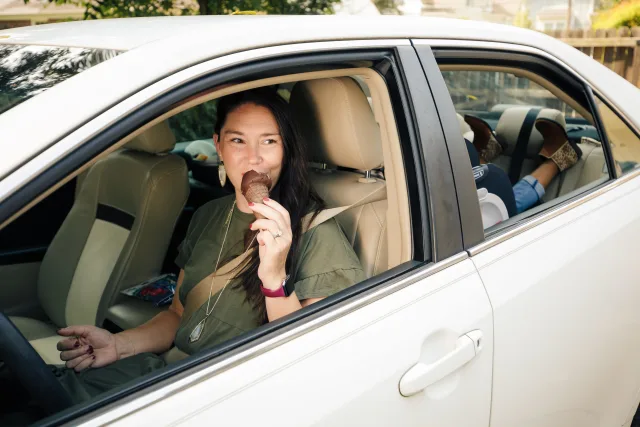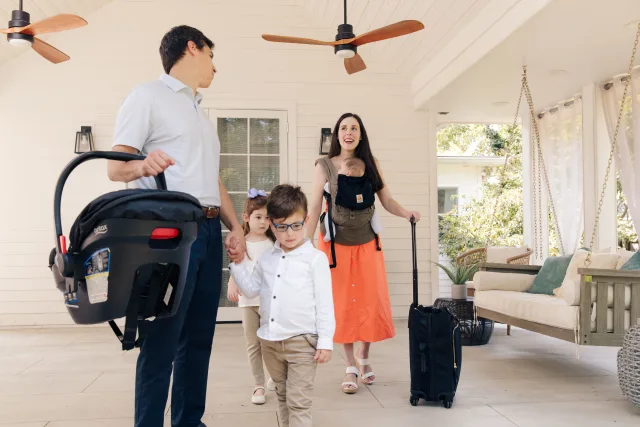If you have a family, the safety standards of your primary vehicle are so important. Whether you’re looking at buying a new car or you’re assessing the old one, safety features should be a much bigger selling point over the paint color and cup holder setup. But before you jump into a big vehicle purchase, understand that though not all vehicles are made the same, they all abide by the same laws.
There are quite a few mandated safety features. Any vehicles made after the date the law was implemented have to come out of the factory with that safety feature. Each one of these regulations was implemented to make you, other drivers, and your family safer with every ride. Some features prevent crashes whereas others protect you if there ever is one.
What are these required safety features, though? It’s a great idea to know this information, so you can determine what additional safety features are important to you. Below, we’ll discuss a few key safety features that keep your family safe no matter the circumstances.
What Car Safety Features Are Required By Law?
Airbags
As of 1998, all vehicles are required to have front airbags as a minimum. You might be surprised to hear front airbags are the only one mandated, because side airbags are pretty much in every car. Most vehicle manufacturers have gone above the federal requirements to provide this sought-after safety technology.
Airbags significantly reduce the risk of injury and death in drivers and passengers. Front airbags reduce the risk of death by around 30% and side air-bags lower the risk between 37% – 52% depending on the type of vehicle.
Recently, manufacturers have added airbags in new and innovative locations. These include rear-window curtain airbags, far-side airbags, inflatable seat belt airbags, and even knee airbags. All of it makes a difference!
Tire Pressure Monitor
Ever seen a yellow light shaped like a horseshoe with an exclamation point come on in your vehicle? That’s your tire pressure monitoring system letting you know one or more of your tires is flat, nearly flat, or at least currently losing pressure. Some give you the exact pressure readings whereas others just alert you if there’s a problem.
This is an important safety system because you can manage your tire pressure before your tire blows out while you’re driving down the highway. Beyond safety, the right pressure will give you better fuel economy too!
Backup Camera
You might not know about this one yet, but the government mandated in 2018 that all new vehicles must be equipped with backup cameras. This is especially useful to keep children safe because if kids are walking behind your vehicle, they’re difficult to see and they may be unaware of their surroundings. Backup cameras also help reduce blind spots and allow you to back out of driveways and parking spots with confidence.
Seat Belts
Arguably the most important safety feature in a car is the seat belts. All cars manufactured since 1968 have seat belts, and according to the National Highway Traffic Safety Administration you can reduce your risk of injury between 45% – 65% by wearing a seat belt.
Seat belts also protect others in the vehicle. When you’re in a collision, your body may ping-pong around the vehicle and become a dangerous projectile if you’re not belted. This puts other passengers at a huge risk! Even if they’re restrained, if you’re not wearing a seatbelt you could possibly cause significant injury to other vehicle occupants, including fatal injuries.
Anti-Lock Brakes and Automatic Emergency Braking
Anti-lock brakes are another mandatory car safety feature that has been required in new vehicles since 2012. The Anti-Lock Brake System or ABS is designed to prevent the tires from locking up or skidding when you brake hard. That way, it’s easier for you to steer and maintain control of your vehicle in an emergency situation.
And, to take it further, as of 2022 all vehicles come with AEB, which is “automatic emergency braking.” This system detects a possible collision, and brakes for you if you don’t see the incoming threat. Your car might detect a stalled car on the interstate, and brake as you approach at a high speed. It could do the same for a pedestrian, road debris, or other potentially dangerous objects.
Electronic Stability Control
The electronic stability control system in your vehicle helps you maintain control of your vehicle in the worst situation. This advanced safety feature uses a computer to prevent your vehicle from spinning out or slipping when there’s a sudden loss of traction or steering control. Any car made after 2011 will come with an ESC system.
LATCH
LATCH stands for “Lower Anchors and Tethers for Children,” and it’s for safety and quickly installing child safety seats. The anchor embedded into the seat and vehicle frame makes a secure restraint system for babies and children. The LATCH child safety seat system has been required in all new passenger vehicles since 2002.
For more on safely installing car seats, please check out this post! We’ll walk you through how to know if your car seat is safely installed. And, we highlight that the LATCH system has a weight limit your child may have already reached. Be sure to confirm that before riding with your littles again! For more car seat assistance, consider investing in a car seat consult to get specialized help and education.
Are there safety features required for other types of vehicles?
These are just a few of the required safety features required for standard vehicles. There are other features like adaptive cruise control, blind spot detection, lane departure warnings, and collision warning systems that you can find standard in new vehicles. However, what about other types of vehicles?
Each type of vehicle has its own sets of regulations and standards. It’s wise to look into the requirements for each type before taking off, because you may be shocked at current safety laws regarding that vehicle type. For instance, RVs have very few safety requirements whereas school buses are surprisingly abundant with advanced safety features.
If you’re interested in learning more about safe riding in other vehicles, check out these posts:
The newer the vehicle the more safety features, so be sure to take the time to understand what advancements your car has to keep your family safe!
Historically, vehicle manufacturers were not overly concerned about the safety of passengers large or small. Now, there are regular safety advancements that make us safer and safer on the road. Ensure you know what safety features your vehicle is equipped with, and confirm your child is in a properly installed car seat that suits their age and size. This will keep everyone safe in their seats! Check out our blog for more car seat and vehicle safety info!






